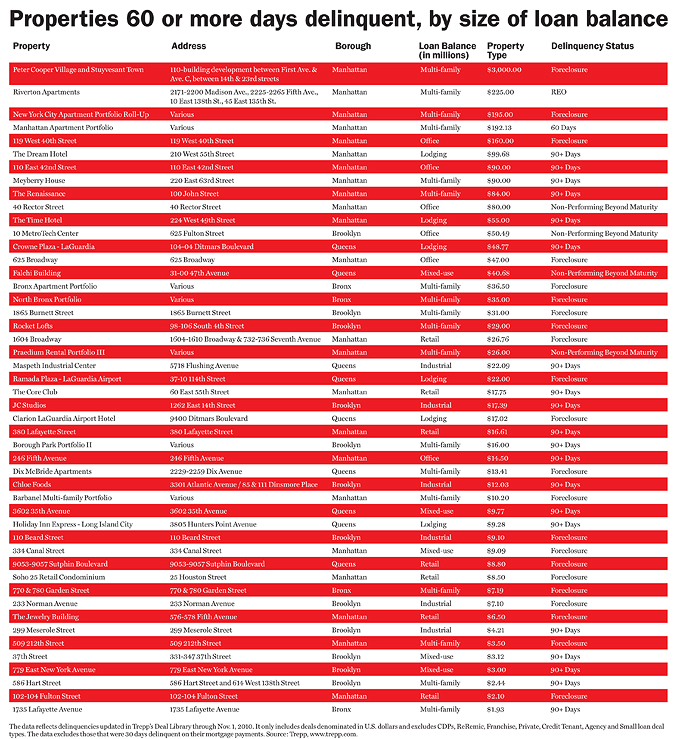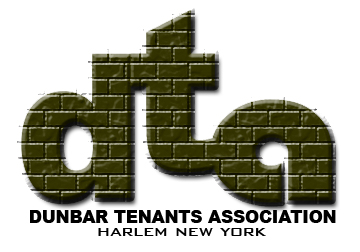Harlem Residents Hold Sit-In to Protest Farmers Market Takeover of Plaza























 The Kitchen of Matthew Henson North Pole Explorer
The Kitchen of Matthew Henson North Pole Explorer
Controversial landlord Pinnacle Group has shed one of its uptown properties for $12.5 million, according to city property records.
A group called Latham Properties, affilitated with the budget Latham Hotel on East 28th Street, bought 169-175 East 101st Street, a 119-unit apartment building, on February 26.
The buyer could not be reached for comment. The seller had acquired the building in 2004 for $9.4 million.
Pinnacle Group, which, according to a July 2007 New York Post article titled "'Slum Bum' Hit with RICO Suit," owns 420 buildings in Manhattan and the Bronx, has been the subject of repeated attacks by housing advocates for its tactics in turning affordable units into market-rent apartments.
According to a 2006 Village Voice exposé, a community forum on Pinnacle's alleged abuses attracted 200 residents:
One by one, residents accused Pinnacle of aggressive court tactics—attempts to violate tenants' succession rights, for example, and to evict for bogus reasons. They complained that the company fails to make repairs, or delays repairs, or does shoddy improvements to raise rents beyond regulated limits. Mostly, they blasted the real estate giant for moving into their neighborhoods and moving them out.
In January of 2008, Pinnacle hired Eastern Consolidated to market a portfolio of its properties, hoping to get more than $70 million for 384 apartments, according to an article by my colleague Eliot Brown. Sources say that Eastern Consolidated did not do this deal.
 Scott Stringer
Scott Stringer
The Pinnacle Group filed a lawsuit against Manhattan Borough President Scott Stringer in New York State Supreme Court this month to force his office to release records of his communications with tenants who filed a federal lawsuit against the controversial real estate company.
Pinnacle sued on June 13, less than a year after a tenants' organization and 10 residents filed a lawsuit in Manhattan U.S. District Court against Joel Wiener's Pinnacle Group alleging deceptive practices, harassment and racketeering.
Pinnacle has denied the charges, and moved in November to have the case dismissed. The judge has yet to rule on the motion.
The Manhattan-based real estate giant owns more than 21,000 rent-regulated apartments in about 420 buildings in Manhattan, Brooklyn, Queens and the Bronx.
Pinnacle sued Stringer, as well as Public Advocate Betsy Gotbaum, after Stringer criticized the company in a public conference call on July 11, 2007, by saying: "The name Pinnacle is just simply a code word for mass eviction."
Wiener's company filed a Freedom of Information Law request in October to review Stringer's records supporting that comment, including information from a housing workshop and public hearing; as well as the communications with the tenant plaintiffs in the federal suit.
Stringer's spokeswoman, Carmen Boon, said in an email that his office did not release all the documents Pinnacle requested because many were exempt from disclosure under the state's Freedom of Information Law. Asked if Stringer would turn them over, she responded that the documents were exempt, but that Pinnacle had the right to sue for them in court.
An attorney for Pinnacle declined to comment. Stringer and Gotbaum did not immediately respond to requests for comment.
Kim Powell, one of the plaintiffs in the federal lawsuit and a Pinnacle tenant in Harlem, said the company wanted to obtain the information to get a leg up to fight the tenants' case alleging violations of the Racketeer Influenced and Corrupt Organizations Act, or RICO.
"Knowing what was said and what is on the record sort of gives them a heads up of our legal strategy," she said. "This is another form of harassment and intimidation."
State Attorney General Andrew Cuomo and the city Department of Housing and Community Renewal struck a deal with Pinnacle in late 2006 that allowed an independent investigator to review the firm's records, following state investigations of allegations of tenant harassment.
http://therealdeal.com/newyork/articles/pinnacle-sues-stringer-over-tenant-conversations
The volume of seriously impaired CMBS loans in New York City grew by 3.8 percent last month after a portfolio of 1,083 Upper West Side apartments co-owned by Pinnacle Group and private equity partner the Praedium Group slipped further into delinquency, according to October data from Trepp compiled for The Real Deal.
The data includes CMBS loans backed by New York City properties whose payments are more than 60 days overdue. The Pinnacle-Praedium delinquency -- the fourth-largest of 49 such loans in the city -- was solely responsible for the increase, which put the city's total volume of loans more than 60 days delinquent at $4.9 billion (see the full list of seriously delinquent New York City CMBS loans below).
The overall five-borough delinquency rate, which includes all defaulted CMBS loans, was 7.15 percent at the end of October, Trepp said. That's significantly below the national CMBS delinquency rate of 8.58 percent, and according to Trepp vice president Paul Mancuso, the fact that the city's top five defaults comprise over three quarters of its delinquency volume is a sign of "the area's resiliency in managing the commercial real estate downturn."
Without the $3 billion Stuyvesant Town and Peter Cooper Village loan, he noted, the city's delinquency rate would be a mere 3.12 percent.
The Stuyvesant Town loan is now under the control of special servicer CW Capital Asset Management, which reached a deal with mezzanine lenders late last month and canceled its planned foreclosure auction. CW now plans to enter negotiations with tenants over a possible cooperative ownership conversion for the property.
Nationwide, October's delinquency rate represents the first drop in that measurement in more than a year, driven by the liquidation of the Extended Stay Hotels brand. Overall, $58.3 billion worth of delinquent CMBS loans remains on the books, according to Trepp.
But as one chapter of the post-recession commercial real estate saga closes, another opens.
The Pinnacle-Praedium portfolio, which consists of 36 mostly rent-regulated buildings scattered between West 100th and West 161st streets, has an approximately $192 million loan balance. The partnershipacquired the loan at the height of the market, intending to convert the units into market-rate rentals, but the plan is said to be going slower than expected, creating a financial headache for the landlord.
As the Wall Street Journal first reported this summer, Pinnacle and Praedium are hoping to convert the buildings to condominiums in the hopes that sales will help boost cash flow. Special servicer LNR Partners was in the process of negotiating a loan modification with the borrower as of early last month, documents show.

A partnership that is one of New York's largest apartment owners is seeking to convert more than 1,000 rental units in 36 financially distressed Upper West Side buildings into condominiums.
The partnership, which includes Joel Wiener's Pinnacle Group and Praedium Group of New York, is under increasing legal and financial pressure to map out a new strategy for the buildings.
The most recent headache facing the venture: a $192 million loan backed by the properties which went delinquent earlier this month, according to Trepp LLC, a firm that monitors the commercial real-estate debt market.
The building seen here at 894 Riverside Dr. on Manhattan's Upper West Side is one of 36 that the owners are seeking to convert from rental runs into condos.
Pinnacle, which owns hundreds of other apartment buildings throughout the city, and Praedium, a New York real-estate firm with more than $7 billion in assets, pursued a strategy that tripped up numerous investors during the boom years. The partnership bought the 36 buildings with plans to upgrade as many rent-regulated units as possible and convert them to market-rate rentals.
But the conversions have gone slower than expected. So the partnership is talking to LNR Partners, the special servicer overseeing the $192 million mortgage for bondholders, about a plan to sell the units as condominiums which they hope would boost the value of the properties, according to Trepp.
"They're having trouble with their original business plan so they're looking to go this route," says Frank Innaurato, a managing director at Realpoint, a unit of Morningstar Inc. that also monitors commercial real-estate mortgages.
Praedium didn't return calls seeking comment and LNR declined to comment. Pinnacle said it doesn't discuss its relationships with partners or lenders.
The partnership is discussing the conversion plan at a time that Pinnacle and Mr. Wiener are facing other legal issues.
They are being sued by a group of tenants at a number of their properties that claimed Pinnacle and Mr. Wiener had used "illegal, fraudulent, and harassing practices" to inflate rents above what are allowed under New York's rent-control and rent-stabilization laws, according to an amended complaint filed in Manhattan federal court in 2007. The case was granted class-action status in April and a settlement conference has since been scheduled.
Kenneth Fisher, a former New York City Council member and a lawyer who represents Mr. Wiener and Pinnacle, said the claims of the tenants in the case are unfounded and the landlord is proud of its record of providing safe and well-managed housing for thousands of New Yorkers.
"Any large organization makes occasional mistakes but the allegation of some vast conspiracy is completely bogus," Mr. Fisher stated in an email.
Manhattan Borough President Scott Stringer, who has supported the tenants in their suit, said he was concerned about the possible conversion of the rentals to condos because it would continue to erode the rent-regulated housing stock.
"Dwindling affordable housing options will force working and middle class families to migrate elsewhere, causing New York City to become a City for the rich with enclaves for the poor," Mr. Stringer wrote in a statement.
The owners hope to convert more than 1,000 units.
When Pinnacle and Praedium obtained the loan for the 36 buildings in a refinancing in 2007, the companies projected they could raise average monthly rents in the properties to $2,913 by the end of 2012 from about $1,000 in 2007, according to Manus Clancy, a senior managing director with Trepp.
Since then occupancies have dropped to 82% last year from 96% in 2007 and the portfolio's net operating income fell to $2.7 million last year from $4.7 million in 2008, not enough to cover the annual debt service of about $12 million, according to Trepp.
Praedium and Pinnacle aren't the only apartment investors considering conversions of rental apartments to condos. The plan also is being considered in connection with the financial collapse of the Stuyvesant Town and Peter Cooper Village rental complex in Manhattan.
A partnership led by activist investor William Ackman is battling for control of Peter Cooper Village and Stuyvesant Town and seeking to convert the complex's units into cooperative apartments.
Write to Maura Webber Sadovi at maura.sadovi@wsj.com
NYC PINNACLE TENANT ALERT
BRUSH (Buyers and Renters United to Save Harlem)
in collaboration with
Manhattan Borough President Scott M. Stringer
present
NYC Pinnacle Tenants Class Action Forum
Sunday, May 23, 2010
1:00 - 3:00 p.m.
Publish PostOberia Dempsey Center Auditorium
127 West 127th Street
Between Lenox Avenue & Adam Clayton Powell Boulevard
On April 27, 2010 the United States District Court, Southern District of New York in the case of Charrons, et al., -v- Pinnacle Group NY LLC and Joel Wiener issued a landmark decision to certify a class action against Pinnacle Group NY LLC. This decision impacts current and possibly former tenants living in Pinnacle buildings in the Boroughs of Brooklyn, The Bronx, Manhattan, Queens and Staten Island.
Hear more about this case, what the court’s decision means for you and the thousands of tenants across New York City who are now members of this class action and able to submit evidence against their landlord.
WHO SHOULD ATTEND?
Tenants in NYC who from July 11, 2004 -April 27, 2010 currently live in or have lived in a rent-stabilized or rent-controlled apartment directly or indirectly in whole or in part owned by the Pinnacle Group LLC
Please confirm your attendance via email at forum@manhattanbp.org or via telephone at212.669.2094
